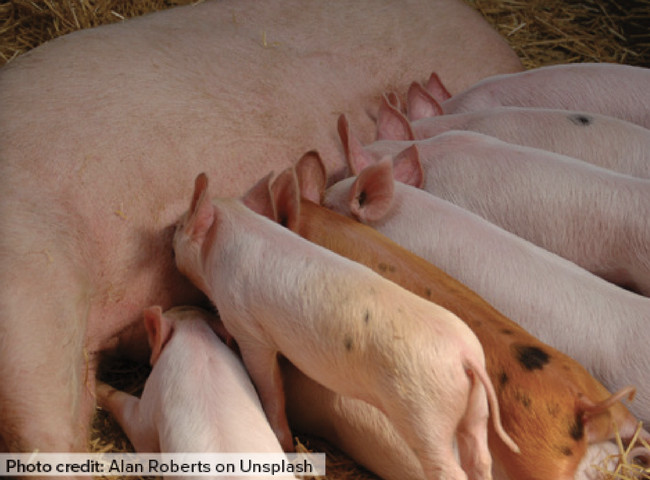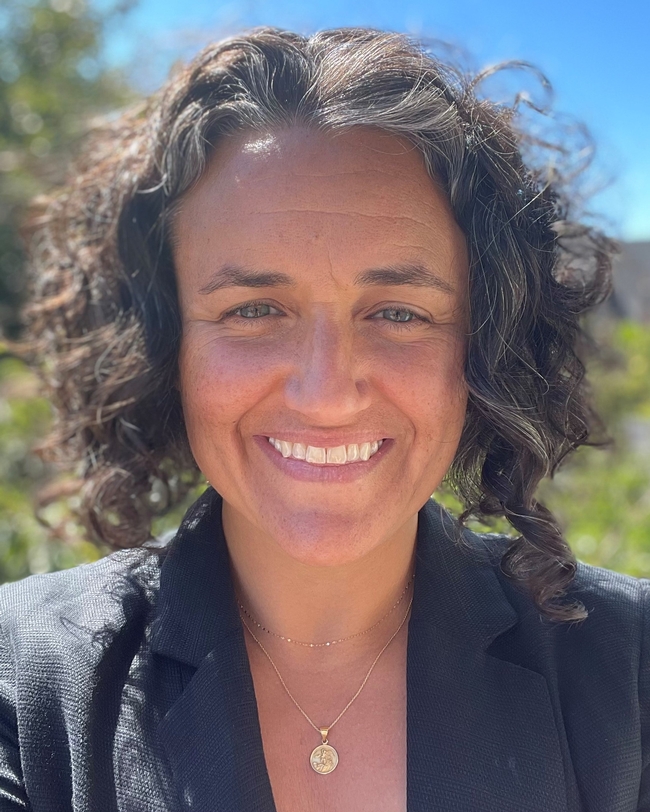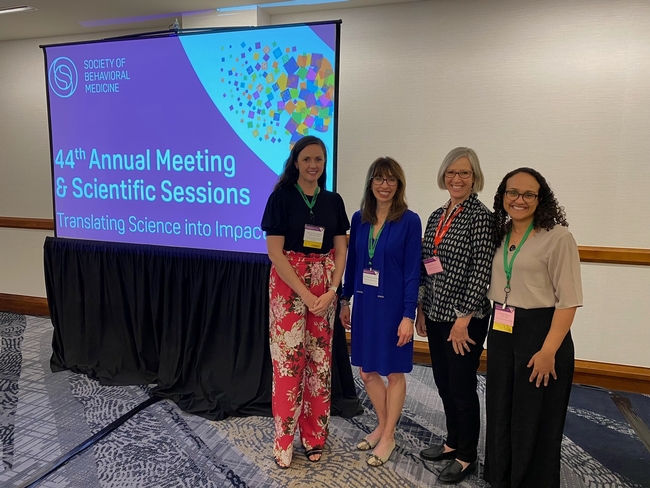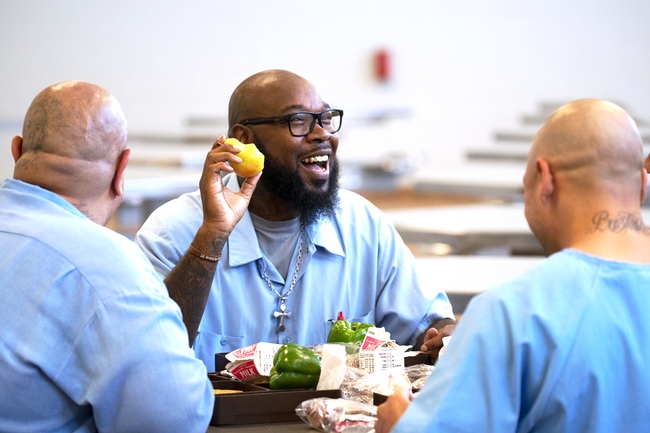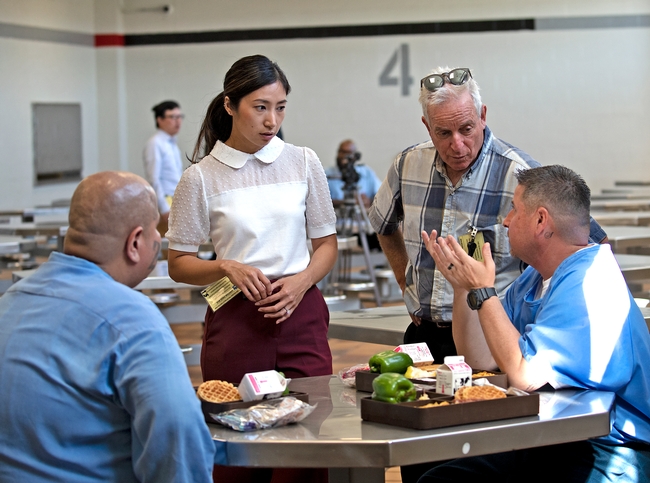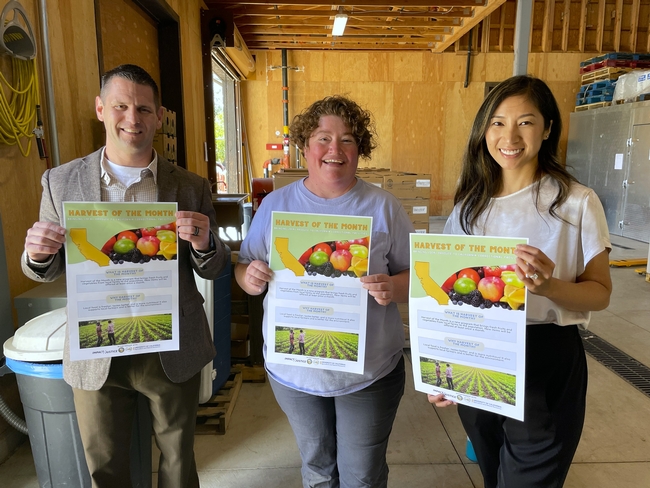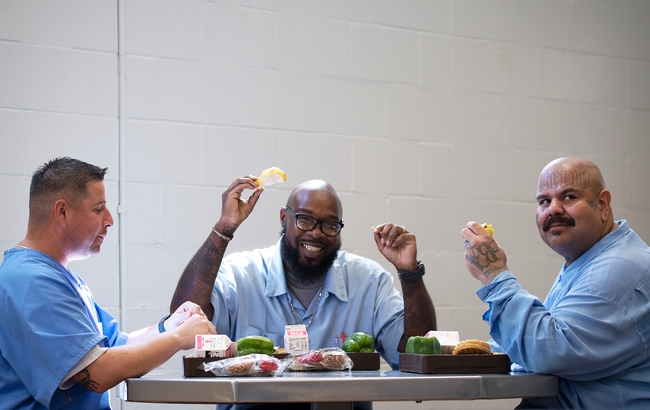Posts Tagged: policy
College students eligible for food assistance deterred by confusing requirements
Modifying Farm Bill could reduce barriers to SNAP for students and improve nutrition
Inadequate access to food can harm college students' health and academic performance. A recent University of California research study in the Journal of Nutrition Education and Behavior investigated why UC students who are eligible for the federal Supplemental Nutrition Assistance Program (SNAP) – the nation's largest food assistance program – do not receive the benefit.
“Based on our study findings, eliminating the extra requirements for college students to qualify for SNAP would go a long way in ensuring that more eligible students get the support they need to meet their basic food needs,” said study coauthor Lorrene Ritchie, director of the UC Nutrition Policy Institute, which is part of UC Agriculture and Natural Resources.
A 2015 study by NPI found four in 10 UC students didn't have enough money to buy sufficient food for a healthy lifestyle. To promote better health, UC has taken steps to ensure students are aware of SNAP, established campus food pantries and other basic needs resources.
"In California, SNAP is known as CalFresh and despite policies and communication to improve college students' access to CalFresh, participation remains low, with approximately 78% of those eligible not receiving benefits," said lead study author Suzanna M. Martinez, associate professor in the Department of Epidemiology and Biostatistics at UC San Francisco.
For insight on why low-income UC students aren't receiving the benefits, Martinez, Ritchie and colleagues at UC San Francisco and Nutrition Policy Institute consulted county agencies that process student CalFresh applications. The researchers interviewed county staff in nine counties that are home to UC campuses: Alameda, Los Angeles, Merced, Orange, Riverside, San Francisco, Santa Barbara, Santa Cruz and Yolo.
While CalFresh benefits have mainly been paid by the federal government through the Farm Bill, counties contribute and county agencies are responsible for implementing policies, determining eligibility, processing applications and distributing funds.
“With the Farm Bill still up for reauthorization, these findings could provide insight into how to strengthen SNAP policy related to eligible students,” Martinez said.
The researchers conducted focus groups and interviews with county staff to determine how agency workers interpret the complex criteria for students to meet CalFresh eligibility.
Their questions focused on how students' applications differed from those of community members, steps taken when processing student applications, student-specific training and suggested improvements to the process.
Five central themes were identified in the interviews:
- More consistent policy dissemination and program administration is needed
- Student exemptions and the application process are perceived as challenges for students
- Key supports for successful student applications include carefully reviewing applications for potential exemptions, providing useful resources to students, and campus partnerships
- Tracking policy changes is burdensome
- Eliminating student rules and treating students as regular clients would be more equitable
The researchers found that CalFresh rules are challenging for students as well as the county agency staff.
Also, eligibility requirements, written over 50 years ago, are based on the assumption that college students are supported by middle-class families.
The research supports simplifying the student CalFresh process to increase participation for eligible students, especially for historically underrepresented racial and ethnic groups and low-income students for whom equitable access to CalFresh benefits is critical.
“Once students get confused or don't know what they need to do, they don't follow through with their application,” one CalFresh eligibility worker told the researchers.
During the COVID-19 pandemic, some federal and state requirements were waived or relaxed for students.
“The timing of this study resulted in a natural experiment since COVID-19-related SNAP modifications streamlined the student application process and reduced administrative burden,” Martinez noted. “These modifications alleviated some challenges discussed by county workers, confirming existing opinions to eliminate the student rules.”
Ritchie said, “We hope our research informs policy to remove some of the barriers so students no longer have as much difficulty getting the food they need.”
This study was funded by the California State Legislature, which provided funding to the University of California to address students' basic needs (UC Basic Needs Initiative).
Pork prices may reflect uncertainty around Prop 12
California's farm animal welfare act, approved in 2018, fully implemented in January 2024 after delays
Since being passed by California voters in 2018, Proposition 12, a farm animal welfare law, has faced a series of legal challenges that have led to uncertainty and delays in the implementation and enforcement of its requirements for the treatment of breeding pigs. A new Special Issue of ARE Update sheds light on its contentious path to eventual full implementation on Jan. 1, 2024, and analyzes how these delays have affected the retail and wholesale pork market.
Preliminary data suggest that Prop 12, and the uncertainty surrounding it, have led to an average retail price increase of 20% for covered pork products (i.e., those included under the regulation, mainly uncooked cuts of pork), as well as significantly higher prices for wholesale pork products during the implementation period and as hog farms nationally continue to adjust to the law.
Prop 12, officially known as the “Prevention of Cruelty to Farm Animals Act,” was approved by 63% of California voters. The law requires housing standards for egg-laying hens, veal calves and breeding pigs for the eggs or meat of these animals or their offspring to be sold in California.
While these standards first went into effect for egg-laying hens and veal calves as early as Jan. 1, 2020, many farms and businesses were hesitant to make large investments in the sow housing and traceability requirements until legal issues were settled for Prop 12-compliant pork.
On May 11, 2023, the U.S. Supreme Court upheld Prop 12. As a result, and consistent with rulings of the Sacramento Superior Court in California, California began requiring Prop 12-compliant pork on July 1, 2023, while allowing remaining non-compliant pork already in the supply chain to be sold until Jan. 1, 2024. Although full enforcement began almost eight months after the Supreme Court ruling, hog farms, almost all of which are outside California, continue to expand the supply of pork from hogs born of mother pigs that meet California housing and treatment standards.
“A long complicated process is not uncommon for major regulations,” said Daniel A. Sumner, a study co-author and distinguished professor in the UC Davis Department of Agricultural and Resource Economics.
Economists Hannah Hawkins, Shawn Arita and Seth Meyer with the U.S. Department of Agriculture's Office of the Chief Economist have been documenting prices and quantities of hogs and pork as the industry has adjusted to Prop 12. Using Circana retail scanner data, they found that in the past nine months covered pork products sold in California increased in price compared to the rest of the United States. While there was significant price fluctuation between the partial and full implementation dates, the initial price impacts were higher than would be expected after full adjustment, with price increases of 16% for bacon and 41% for pork loin.
Based on USDA Agricultural Marketing Service data, the authors found that wholesale prices for compliant pork cuts also increased substantially during the adjustment period, with an average price premium of 22%. Due to the many delays in implementation, Prop 12-compliant pork volumes are not yet sufficient to meet quantities that would have been demanded without these significant price increases. As the industry catches up to supply sufficient quantities of compliant pork meat to meet the California demand and a new market equilibrium is reached, both retail and wholesale prices may settle at lower price premiums. However, we may still be several months away from understanding the full impact of Prop 12 on meat and egg producers and consumers.
To learn more about the implementation of Prop 12 and its impact on the retail and wholesale pork market, read the full Special Issue of ARE Update 27(3), UC Giannini Foundation of Agricultural Economics, online at https://giannini.ucop.edu/filer/file/1710543749/20936/.
ARE Update is a bimonthly magazine published by the Giannini Foundation of Agricultural Economics to educate policymakers and agribusiness professionals about new research or analysis of important topics in agricultural and resource economics. Articles are written by Giannini Foundation members, including University of California faculty and Cooperative Extension specialists in agricultural and resource economics, and university graduate students. Learn more about the Giannini Foundation and its publications at https://giannini.ucop.edu/.
NPI researchers find school recess varies with school size, family income
New law mandates at least 30 minutes of recess for K-8 public school students
Last year, while working on a bill that would require California public schools to provide at least 30 minutes of recess, State Sen. Josh Newman sought the latest research on youth physical activity. Newman, whose district encompasses parts of Los Angeles, Orange and San Bernardino counties, traveled to the Bay Area to see one of the leading experts in the field.
During several visits with Newman, Hannah Thompson – a Nutrition Policy Institute senior epidemiologist and an assistant research professor in the University of California, Berkeley School of Public Health – shared the most recent science.
Both the American Academy of Pediatrics and Centers for Disease Control and Prevention recommend that children have 20 minutes or more of daily recess. But, when asked about the current “state of recess” across California, Thompson said she only knew of anecdotal evidence at the state level.
“I said, ‘You know what? I don't actually know what is going on in California,'” Thompson recalled. “I contacted a couple of colleagues who had done more national-level work on recess that included samples of California schools – but no one was really able to disaggregate what was happening in California.”
She brought up the bill during a meeting with her fellow researchers at NPI, an institute under UC Agriculture and Natural Resources.
And it turned out that Janice Kao, an NPI academic coordinator, had exactly what she needed.
CalFresh Healthy Living evaluation team provides key recess data
Kao leads a project team that evaluates local health departments' programs of CalFresh Healthy Living – California's version of the educational arm of SNAP (the federally supported Supplemental Nutrition Assistance Program).
As part of that evaluation process, Kao's team coordinates questionnaire administration at SNAP-Ed-eligible schools that are partnering with local health departments on CalFresh Healthy Living interventions, ranging from nutrition programs to physical activity initiatives. The survey asks school administrators about their current policies, environments and practices – including the provisioning of recess.
“It was just really good luck that everything was in the right place at the right time to be able to work together,” Thompson said.
At Thompson's request, Kao and her colleagues processed and cleaned that crucial piece of data, comprising responses from 153 low-income elementary schools in the 2021-22 school year.
“Just 56% of schools reported providing more than 20 minutes of recess daily,” Kao said. “So this was a situation where the data showed, ‘OK, there is some room for improvement, perhaps at that state policy level.'”
Thompson and Rebecca London, a sociologist at UC Santa Cruz, wrote a research brief detailing their analysis of the data. They describe disparities in recess time based on school size and income level of families, with students in larger, less affluent schools generally receiving less daily recess.
Thompson said those disparities are related to funding and academic inequities, as the imperative to boost test scores forced schools to increase certain classroom hours at the expense of recess time.
“We did all this work engineering physical activity out of the school day despite the tremendous body of evidence that shows physically active kids not only are healthier but can concentrate better; they have better academic performance, fewer disruptions, better classroom behavior,” explained Thompson, a former physical education teacher in Oakland. “In trying to address that academic gap, we ended up exacerbating a lot of these public health disparities.”
Virtual learning during the pandemic showed educators and parents – firsthand – the harmful effects of children staying sedentary in front of computer screens for hours. But the resulting momentum for restoring recess and time for physical activity was soon stalled as schools tried to make up for “lost time” in returning to classrooms, Thompson said.
NPI resources, expertise invaluable to lawmakers
Newman's bill, SB 291, was an attempt to lock in those recess minutes that are crucial for student health, development and scholastic performance. Both Thompson and London testified before the Senate Education Committee in April 2023, providing the senators with science-based information and context to guide their policymaking.
“Crafting policies rooted in science is critical for legislators to ensure our policies are impactful,” Newman said. “The work of Dr. Thompson and her colleagues at UC provided clear and useful guidance on the benefits of unstructured play and how to improve health and educational outcomes in California schools.”
Gov. Gavin Newsom signed SB 291 into law last October. Starting this coming school year, public elementary and middle schools across California will be required to give at least 30 minutes of recess to K-5 students – and prohibited from withholding recess as punishment.
Kao said her team was excited that their CalFresh Healthy Living evaluation data was useful for lawmakers, illustrating NPI's important role in informing evidence-based policy.
“I'm hopeful that we can use this same data set to also provide key pieces of information on other types of legislation that's in the works, or newly passed legislation,” Kao said.
Thompson said the challenge now will be ensuring schools have the resources and funding to provide quality time for young people.
“If you only have one schoolyard, and it's already dedicated to PE, what do you do now, if you have to increase your time for recess and you don't have that space?” she said.
Thompson added that she is currently applying for a grant to study how schools across California are adjusting to meet the new requirements.
Rauzon, visionary in community health evaluation, retires from NPI
Nutrition Policy Institute researcher developed techniques that help identify effective public health programs
When Suzanne Rauzon and May Wang were in the master's of public health program at the University of California, Berkeley during the mid-1980s, Wang knew that her classmate had unique brilliance to bring to their field.
“You know how you vote for the person in high school who's most likely to succeed? That was Suzanne,” said May Wang, a professor of community health sciences in the UCLA Fielding School of Public Health. “Suzanne was always ahead of every one of us; she was so visionary and forward-thinking and I think we were all – to be honest – a little bit in awe of her.”
Decades later, as Rauzon prepares to retire in January 2024 as director of community health at the Nutrition Policy Institute, she has fulfilled that exceptional promise. Her many contributions are helping communities identify the most effective programs to benefit public health.
Lorrene Ritchie, director of NPI (an institute under UC Agriculture and Natural Resources), said that Rauzon has played a pivotal role in translating research findings into community action and policy change. She added that Rauzon has brought an extraordinary combination of strategic vision for the overall direction of nutrition studies and tactical savvy to anticipate the needs of project funders and communities.
“Few people can bring both of those skills – efficiently complete the day-to-day tasks as well as be a big-picture thinker,” Ritchie said. “She has been so instrumental in contributing to NPI's impacts.”
A unique skill set to tackle complex challenges
Part of what makes Rauzon unique in her field is her extensive experience in the private sector. After attaining her master's degree, Rauzon developed a comprehensive employee worksite wellness initiative at a telecommunications company – a new set of programs that led the field in the 1990s.
“Suzanne was, is and has always been very visionary,” Wang said.
After years in the corporate space, however, Rauzon leaped at the chance to return to academia (and reunite with Wang) in 2001 at UC Berkeley's Center for Weight and Health, a precursor to NPI. Working with center co-director Patricia Crawford, Rauzon said the project to investigate the effects of sugar-sweetened beverages was a “perfect fit” for her.
Concerned with rising childhood obesity, the researchers studied the significant differences in health outcomes for students in high schools that limited access to beverages such as soft drinks, versus schools that did not.
“That field in general – looking to limit sugar-sweetened beverages – started with a focus in schools, and expanded into other environments (such as college campuses) over the years, and has continued to be a focus in public health,” Rauzon said, “all the way up to work now on limiting sugar-sweetened beverages access in other public institutions.”
Rauzon's change-management and communication skills also were crucial in studying the revolutionary School Lunch Initiative in the Berkeley Unified School District – a collaboration with chef Alice Waters' Chez Panisse Foundation and the Center for Ecoliteracy to engage young people in the growing and preparation of food. Brought in to evaluate the efficacy of the program, Wang and Rauzon found they had to alter their mindset and methods when working with partners who were responding to oft-changing circumstances.
Rauzon's cross-sector perspective, practical know-how and people skills in cultivating positive relationships with district staff and educators were instrumental in successfully completing studies with as much rigor as possible in real-world settings such as schools.
The researchers created new analytical tools to evaluate health interventions developed by communities themselves – as opposed to programs engineered by academics and applied to community members with the expectation that they would accept it.
“Most researchers, to be honest, are still striving to do that with communities,” Wang said. “It is an incredibly challenging task because communities will do what they want to do – and what they need to do – to respond to the needs of people.”
Wang, who now trains academics in community-based participatory research, said that the ground-up paradigm has been shaped by Rauzon's thinking. “A lot of the ideas I have today really came about from our work together on the School Lunch Initiative,” Wang said.
A legacy of new methods, mentoring early-career professionals
One of Rauzon's longest-running – and most complex – projects has been the evaluation of community health interventions across the country, including a variety of Kaiser Permanente initiatives to promote healthy eating and physical activity.
“What was interesting about that work was we really were trying to understand the combined effects of doing a lot of different things that are related – and to see the overall effect that can have on the community,” said Rauzon, noting that interventions ranged from nutrition classes to policy changes to park and bike-safety improvements.
Wang said some of their findings, particularly from one study in Los Angeles County, suggest that effective programs are early childhood interventions (including an emphasis on breastfeeding), home visitations by nurses and social workers to vulnerable households, and partnerships with retailers to make healthy food choices more accessible.
In the process, the researchers helped pioneer new research tools – including interdisciplinary “systems mapping” approaches in which computer scientists discern linkages among various programs and their effects, and the highly influential “community intervention dose index” concept that can be used to evaluate multiple intervention strategies within a community.
In addition to Rauzon's contributions in research and evaluation, Ritchie also highlighted her role in supervising and mentoring students and NPI staff and researchers during her 20-plus years with the UC – the role in which Rauzon takes the most pride.
“While I made a contribution to community health in effective interventions and how to measure them,” Rauzon said, “I would say personally the most rewarding part of the work I've done over the last couple of decades is seeing the growth and development and advancement of people who have worked for me and who have really taken off in their own careers – that to me has been immensely satisfying.”
As an emeritus researcher, Rauzon will continue to support NPI professionals and their research, and she added that she's excited to embark on a new partnership – with her husband, a geographer – to mitigate impacts of climate change on human and environmental health across the globe.
People interested in supporting Rauzon's legacy and the ongoing work in health and nutrition can donate to NPI's Student Fellowship, which provides students from underrepresented groups the opportunity to work on NPI research and be mentored by NPI researchers.
‘Farm to corrections’ project provides fresh produce to people in prison, boosts California growers
Nutrition Policy Institute, Impact Justice, ChangeLab Solutions partner with California Department of Corrections and Rehabilitation
Serving slices of watermelon on the Fourth of July is a long-standing tradition at some facilities within the California Department of Corrections and Rehabilitation. But this July, there was something different about the watermelon offered to the approximately 8,000 residents at California State Prison Solano, California Medical Facility and Folsom State Prison.
It was juicy. It was sweet. It was “scrumdiddlyumptious,” according to one resident. And it was grown on a California family farm.
The three institutions are part of a “farm to corrections” project, Harvest of the Month, which aims to serve seasonal, locally grown produce to people who are incarcerated in California, while opening new opportunities for California farmers.
“We appreciate that someone cares enough to introduce this program that gives us something new,” said Jason Romero, a California State Prison Solano resident. “We look forward to what's coming in the future – California has the best stuff, right? – and hopefully we get other varieties of stuff.”
The program – bringing together the Nutrition Policy Institute, the nonprofit Impact Justice, and ChangeLab Solutions in collaboration with CDCR – was officially launched with the watermelon delivery in July. Pluots followed in August, and Bartlett pears were delivered in September.
“It's a ‘multiple wins' kind of an effort,” said Wendi Gosliner, the NPI principal investigator on the California Department of Food and Agriculture specialty crop block grant supporting the project. “The funding is available because the state is looking for state partners to purchase and expand the markets for California-grown fruits and vegetables. And we know that getting more of those fruits and vegetables on the plates of people who are incarcerated would be a huge bonus for them.”
California State Prison Solano resident Patrick Range said that, after tasting pluots for the first time through the program, the plum-apricot hybrid is now one of his favorites.
“I think I had five of them that day – and I'm waiting for them to have them again so I can get more; they were so good,” Range said. “It's something I'd never experienced, in the outside world or in prison.”
With rave reviews from residents and staff alike, CDCR – the State of California's biggest purchaser of food – is planning to roll out Harvest of the Month to all 33 of its adult facilities within the next two years.
“Food brings individuals together and introducing new products can give those in the care of CDCR something to talk about, as well as look forward to,” said Lance Eshelman, CDCR's departmental food administrator.
Improving conditions for people within correctional institutions is core to the mission of Impact Justice, which is working with partner organizations across the U.S. to bring fresher, more nutritious food to facilities, in support of residents' physical, mental and emotional health.
“We really want to prioritize the holistic well-being of an individual to help ensure that once they come home from incarceration, they are in a place where they are ready to actually contribute back to society,” said Heile Gantan, program associate with the Food in Prison project at Impact Justice.
Range said that enjoying the fresh produce – and learning more about its nutritional value – is helping him live a healthier, more energized, and hopefully longer life.
“I was a kid that didn't like vegetables; I didn't want nothing to do with vegetables…[but] as an adult, being 46 years of age, I want this for myself – I want to be able to tell someone else, to teach someone else about what I experienced when getting these fruits and vegetables that helped that nutritional factor,” he said.
In addition, Gosliner noted that early research suggests better food can benefit not only the well-being of residents but also of staff, with a calmer and safer work environment.
Partnership built on shared values, priorities
Gosliner and Ron Strochlic, academic coordinator at NPI, saw an opportunity to support “farm to corrections” work through a CDFA block grant, which aims to boost the purchase of California-grown specialty crops.
“CDCR is the state's largest single purchaser of food, so they're a natural place to consider ways to improve food systems,” said Gosliner, who was awarded the grant in 2020 to work with partners to research and develop pathways that encourage CDCR procurement of California produce, as well as nutrition programs for formerly incarcerated individuals. The project produced a report summarizing the opportunities and challenges in bringing more California-grown produce to the state's prison system.
The staff at Impact Justice appreciated that the NPI team brought not only research and evaluation acumen to the partnership but also an abiding concern for the people inside correctional facilities.
“Our grant funding was focused on simply increasing access to and consumption of California-grown specialty crops in CDCR prisons, but our team was very much in alignment around values and really focusing on the health and well-being of residents – highlighting and amplifying residents' experiences and voices,” said Leslie Soble, senior program manager of the Food in Prison Project.
Gantan echoed that sentiment, adding that NPI – which is under the University of California Agriculture and Natural Resources umbrella – also contributed its familiarity with regional food systems, particularly food hubs across the state.
According to the NPI team, engaging food hubs – organizations that aggregate, distribute and market food products from local producers – was a logical way to make a “farm to corrections” match.
“The majority of CDCR facilities are located in rural, agricultural regions, so to us, it was kind of a no-brainer to connect those facilities with the local communities and local farmers in the area,” Strochlic explained.
For the Harvest of the Month project, the partners teamed up with Spork, a Davis-based, mission-driven food hub that sources from growers across Northern California. Spork also aggregates the fresh produce from local farmers and delivers it to participating CDCR facilities each month.
“The farmers are very excited to see the change in the systems at CDCR in food and nutrition and what they're offering to the residents – and they're excited for the potential that this has for a larger, more consistent market,” said Hope Sippola, co-owner of Spork, which emphasizes working with underserved farmers as part of its mission. “We really needed to dig deep to figure out how to successfully implement this change of CDCR purchasing from large distributors to a food hub who sources from local family farms.”
Carolyn Chelius, an NPI project policy analyst and project manager of NPI's Farm-to-Corrections work, said the team hopes, as Harvest of the Month scales up, that they will be able to make Spork's generous investment of time and resources pay off.
“Our ultimate goal is to be able to benefit Spork and help them with their business, but it's been really helpful to have them as champions – people who are really interested in the mission,” Chelius said. “I don't know if this project would have been possible otherwise.”
California produce purchasing requirement helped spur project
Of course, cultivating a strong working relationship with CDCR also was essential. On the heels of AB 822 (a policy requiring state agencies to buy California-produced food over other options if the price differential is 5% or less), another powerful impetus for CDCR was the passage of AB 778 in 2022. It requires that, by the end of 2025, at least 60% of food purchased by state-run institutions must be grown or produced in California.
Eshelman, the departmental food administrator, said the law has challenged CDCR to look closely at its statewide menus and identify items that could be sourced from California growers and producers. He said that, through this project, food service team members have gained new knowledge about food production in the state, such as variability due to regional differences and weather trends.
“The Harvest of the Month program provides an additional resource, and places CDCR in contact with subject matter experts such as food hubs and local growers who can provide valuable insight into what to expect in terms of California-grown or produced food items and their accessibility,” Eshelman explained, adding that NPI and Impact Justice also have been vital resources for CDCR.
Gosliner acknowledges the challenges in retooling processes and procedures across CDCR, the second-largest correctional system in the U.S. With nearly 100,000 incarcerated individuals in its care, CDCR purchases more than $163 million in food each year.
“It's a big ask of a major state institution to reconsider some of their systems for doing something that they do every day: providing food to the people who are incarcerated,” Gosliner said. “It's revolutionary for them to rethink who they're sourcing from, to rethink how much fresh produce they're serving, to rethink the variety of that produce – it's a big lift for CDCR.”
‘This is really the beginning'
As CDCR brings Harvest of the Month to more institutions across the state, the collaborators anticipate that the logistics will smooth out – and that more farmers will be willing to participate.
“If we can add some more facilities and increase the volume, we have a better chance of making it work for growers, so we're really hoping that we can continue with this food hub model,” Strochlic said. “For us it's really important to be able to source from small and medium growers as well.”
And while flyers describing the health benefits of each month's “Harvest” item are currently distributed at the participating facilities, the partners hope they can provide additional nutrition education opportunities for the residents – during their time inside and after incarceration (like in the workshops held across the state).
Soble and Gantan of Impact Justice also noted that all members of the project team have been learning together, exploring “new territory” in growing this innovative partnership.
“I know personally I've learned so much from the NPI folks just about policy related to food and nutrition in California and about different nutrition interventions,” Soble said. “To me, it's been a very valuable and positive partnership.”
Gosliner said that building on those relationships will be crucial, as the movement to improve the services provided to incarcerated individuals continues to gain momentum in the state.
“This is really the beginning of California's work,” she said. “Even though we grow so much of the food here, there are other states in the country that are further along than we are in California. This is really the launch.”
Funding for this project was made possible by the U.S. Department of Agriculture's (USDA) Agricultural Marketing Service through grant AM200100XXXXG032. Its contents are solely the responsibility of the authors and do not necessarily represent the official views of the USDA.
Funds from UC Sustainable Agriculture Research and Education Program's Small Grants Program also helped support this project.


